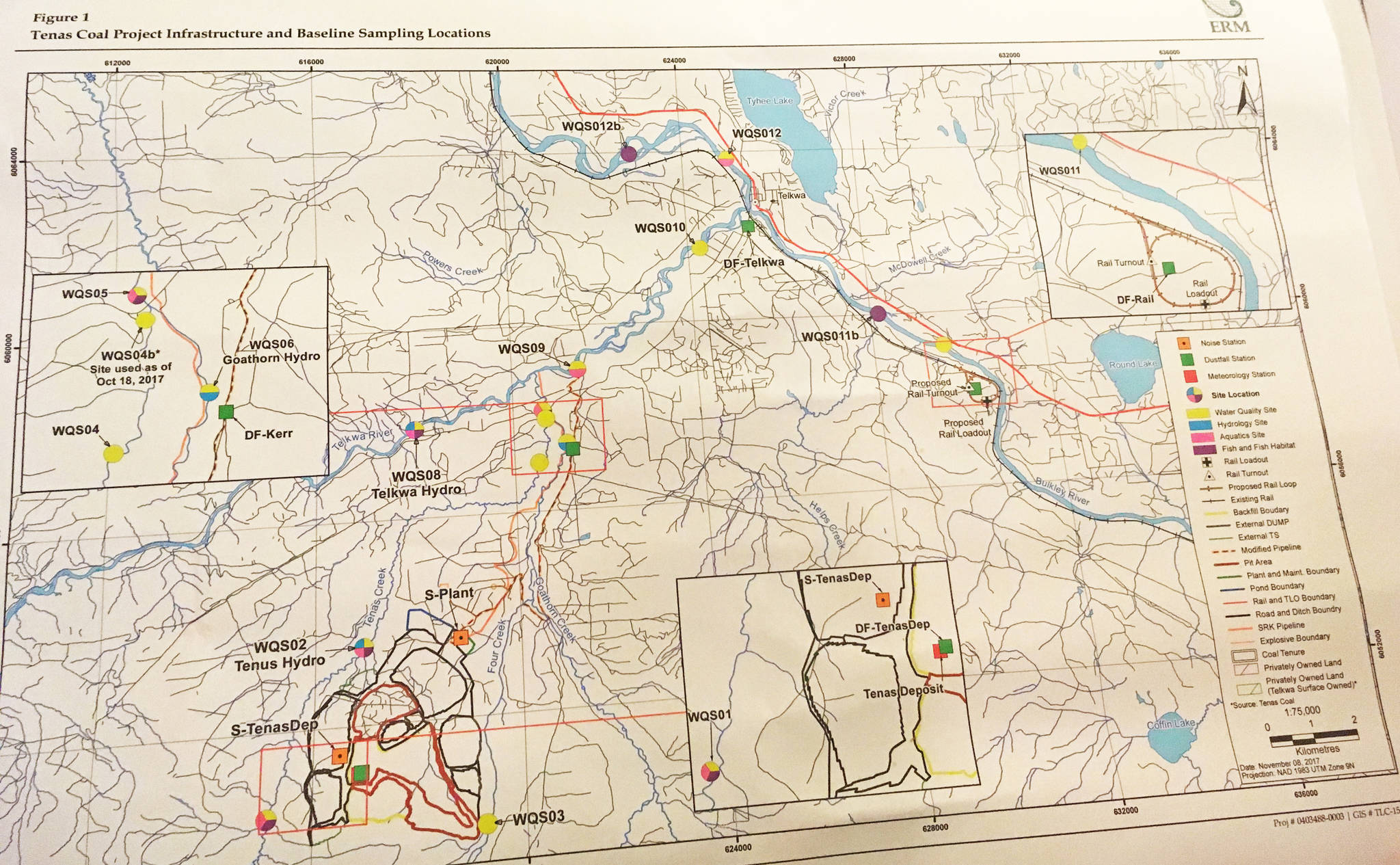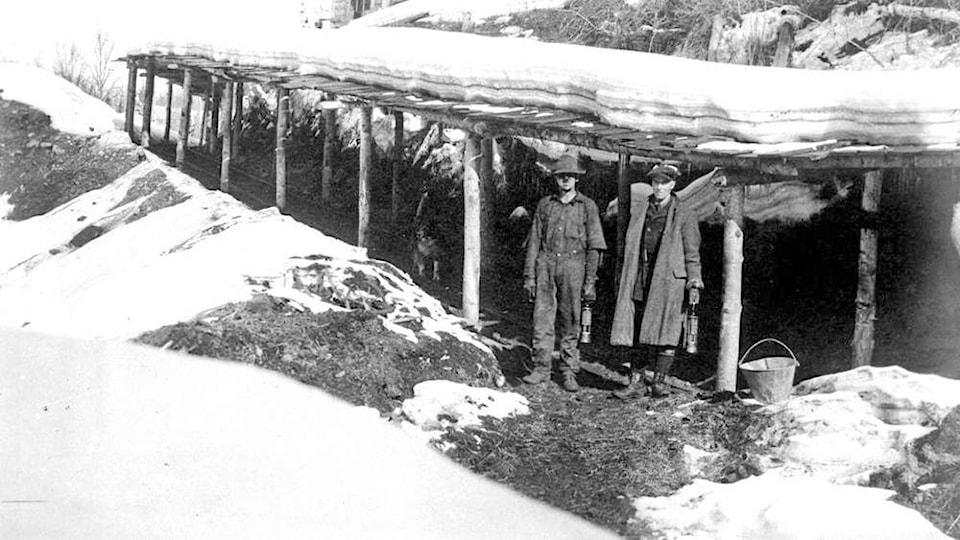Allegiance Coal Ltd wants coal in its stocking next year.
The mining company hopes to join the long list of companies that have built a mine in the Telkwa coal fields.
Allegiance Coal Ltd. acquired the rights to develop the mining project in September 2016. A pre-feasibility study released in July by the company found there is 42.5 million tonnes of saleable coal in the project area.
That coal is metallurgical coal which is used in the production of steel. Seventy per cent of steel created today uses metallurgical coal.
Coal was first discovered in Telkwa at Goathorn Creek, about eight kilometres south of the village, in 1901. Over the course of the next decade several companies conducted exploration and development projects in the area, but it wasn’t until 1918 that the first official coal production from the McNeil Mine began.
“Mining started at a rate of 14 tons per day and later up to 45 tons per day,” wrote Manalta Coal Ltd in its summary of coal mining in Telkwa in its late 1990s project application. “Coal was hauled out by sleigh to the Telkwa siding and sold in Prince Rupert.”
According to Manalta Coal Ltd., the Goathorn Creek Valley mine produced 1,280 to 1,700 tonnes of coal per year between 1926 and 1927 thanks in large part to the Province of British Columbia building roads into the area.
In 1930, Frank Dockrill of Bulkley Valley Collieries Ltd. opened a mine that became the dominant force in the area.
“Between 1930 and 1940 all coal production came from this mine,” reads a report by the Ministry of Energy, Mines and Petroleum Resources. “Markets included domestic heating (mostly local) and, during the war, they supplied the United States Army near Prince Rupert.”
Bulkley Valley Collieries continued its success when it opened a second mine in 1943.
“Production during the late 1940s and early 1950s was about 9,000 tons per year and the price was $ 8 per ton for run-of-mine and up to $10.47 for sized coal,” wrote Manalta Coal Ltd.
In 1951, Bulkley Valley Collierie, in conjunction with the federal government drilled 33 diamond drill holes on both sides of the Goathorn Creek valley in an attempt to locate commercial quantities of coal. They were unable to recover any of their findings due to poor equipment the Ministry of Energy, Mines and Petroleum Resource said.
Coal production slowed down as the industrial market disappeared thanks to new fuel sources, thus production was limited to domestic use.
The Gething mine produced just over 15,000 tonnes from its underground operations between 1972 and 1986 according Manalta Coal Ltd. Afterwards, there weren’t any major coal projects until a proposal by Luscar Ltd. in 1997.
The company submitted an application to develop a coal mine near Telkwa but it was shelved due to low coal prices according to the Village of Telkwa’s website.
Allegiance Coal Ltd. plans to conduct more studies of the area and consult with First Nations before moving on to the next stage of the project.
The company held an open house meant to be invite-only regarding the project in November. It plans a larger open house by spring.
“I think we’re at a stage where we’re still early in the process … We want to give [people] a kind of first look at it to see where we are before we go into a big open house where there could be 200-300 people there,” said Allegiance Coal chief operating officer Dan Farmer in an interview with The Interior News in November.

